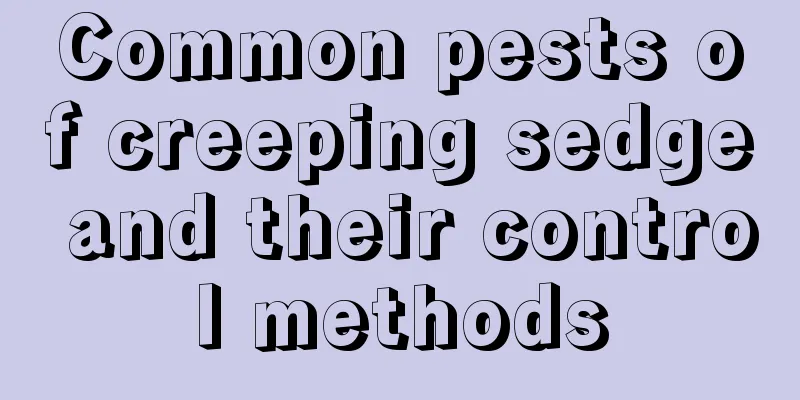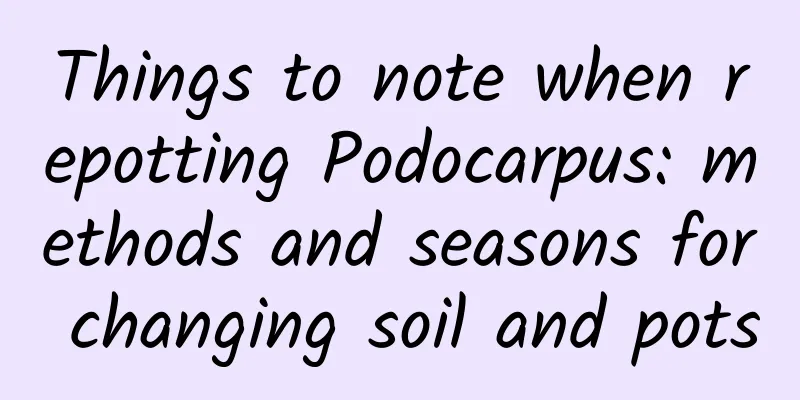Common pests of creeping sedge and their control methods

Common pests of creeping grass: scale insectsPest symptomsScale insects attach to the surface of the leaves of the creeping sedge, and their secretions contaminate the leaves, even causing serious consequences such as leaf withering. Causes of scale insect occurrence: untimely disinfection and breeding of insect eggs. Prevention and treatment methodsSpray the pesticide in time during the nymph stage. You can use 1000 times diluted 40% oxydemeton-methyl, spray once every 8 days, for 2 to 3 times in a row. Mixing white wine with water can also effectively kill scale insects without damaging the small leaves of the creeping grass. It will be even more convenient for flower lovers who have rice vinegar at home. Soak a cotton ball in rice vinegar and gently rub the affected leaves. This can kill the scale insects and make the leaves green and shiny again. Common pests of creeping grass: aphidsPest symptomsAphids often attach themselves to the junction of leaves and branches, densely packed and very disgusting. If a healthy plant is covered with insects, the growth and ornamental effect of the leaves will be affected. Prevention and treatment methodsWashing powder has a contact killing effect on aphids. Use a brush dipped in a 1:500 ratio solution of washing powder and water to scrub the aphids on the branches and leaves of flowers. You can also use a small sprayer to spray it, which can also effectively scrub off the honeydew secreted by aphids. Common pests of creeping grass: butterfly eggsPest symptomsFlower lovers often hang creeping grasses on the balcony, so that butterflies and other insects will fly over and lay eggs on the leaves. After the eggs hatch, they turn into small black and white insects that gnaw on the leaves and even drill into the branches, damaging the plants and possibly even breaking the branches. Prevention and treatment methodsBuy the flower protector and spray it to kill. If the branches are severely damaged, they can be cut off and used for cutting maintenance. Pull out the plant, disinfect it, and then repot it. |
<<: Common Oncidium Pests and Control Methods
>>: Diseases and pests of June snow and their control methods
Recommend
Reasons and solutions for Christmas cactus not blooming
Christmas cactus, as a popular indoor plant, ofte...
What kind of fertilizer is good for orange base fertilizer (base fertilizer application method)
Effect of orange base fertilizer "Apply base...
What are the cultivation methods and precautions for rose begonia
Growth habits of rose begonia Rose Begonia belong...
How to grow Sanguisorba officinalis
1. Breeding environment 1. Soil: Its requirements...
How much does a peace tree cost?
1. Price The price of the peace tree varies depen...
What to do if the leaves fall off the moon rabbit ears
The reason why the moon rabbit ears drop leaves L...
How to make lucky bamboo grow roots quickly with water
1. Water quality environment If you want the luck...
What are high phosphorus fertilizers?
Phosphorus, as a macronutrient, is not only a com...
Can plants be fertilized in winter? (Pothos, Chlorophytum... 5 common flower fertilization methods)
1. Can I apply fertilizer? Whether plants need to...
How to care for the newly bought cat's eye arrowroot
1. How to deal with the newly bought cat's ey...
A complete list of common varieties of potting plants!
Sedum Sedum is not only used in succulent bonsai,...
The efficacy and function of Dai Dai flower
1. Beauty and skin care The jasmine flower has th...
How to care for newly bought Amaryllis
1. How to deal with Amaryllis after buying it The...
Cardinal Coral FAQs
What to do if the cardinal coral grows too long D...
Cultivation methods and precautions of Prunus mume
Habits of Prunus mume Prunus mume prefers plenty ...









